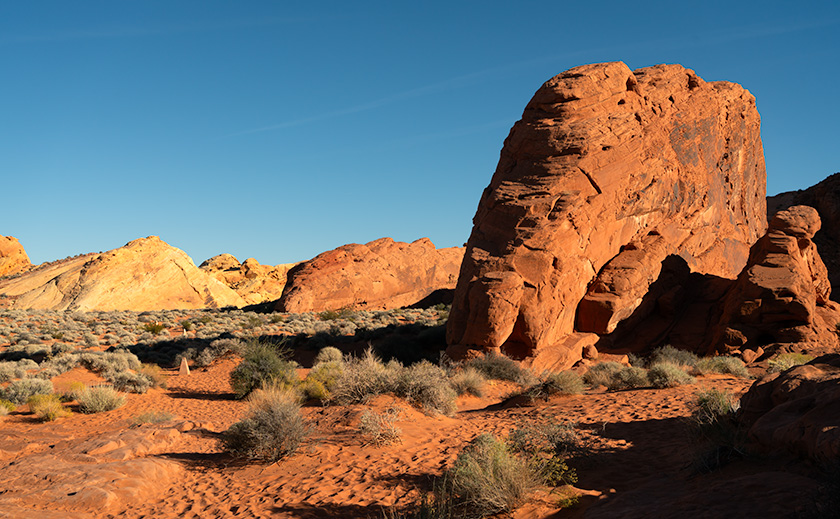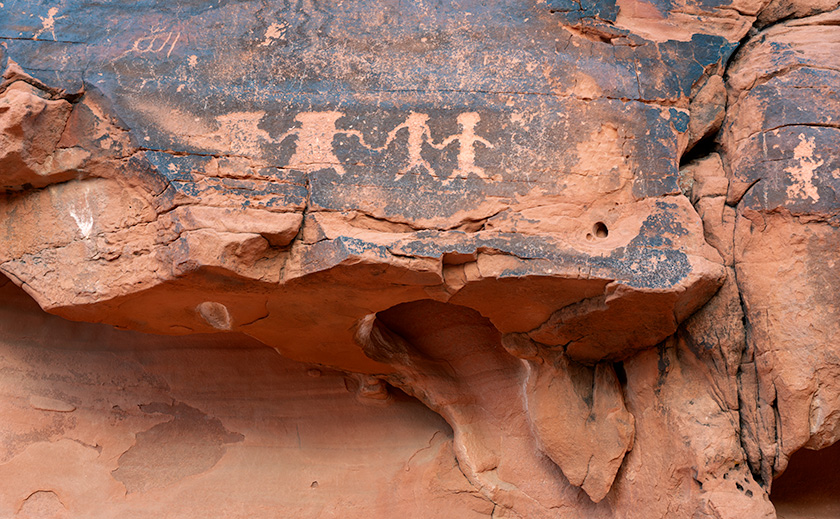
Welcome back to our Valley of Fire saga. After last week’s detour to a reemerged St. Thomas, we’re back on track, diving into the heart of the park’s ancient artistry. Ready for a journey through time? Buckle up; it’s not your average road trip.
Our Valley of Fire expedition began with a grand tour, taking in the vistas from the comfort of our trusty steed—the Turd. As usual, we took a lap around the park to set our bearings. The main road offered plenty of photo ops, but the real treasure lay off the beaten path—Petroglyph Canyon Trail. Here, amidst the whispers of history, we encountered the park’s silent storytellers: ancient petroglyphs.
In the middle of Lake Mead’s east-west reach is a lake section that ventures north into the Moapa Valley, where the Muddy and Virgin Rivers flow into the Colorado. This part of the lake is the Overton Arm. Nestled along the Overton Arm lies a canvas of ancient cultures. From the Anasazi to the Paiute, this valley served as a crossroads for tribes, traders, and travelers.
This week’s image is a scene that I shot along the Petroglyph trail. If you look closely, you’ll see the multitude of visitor footprints in the sand, and fortunately, there are several trail markers to guide the way. Without them, I’m sure I would have ‘taken the path less traveled’ and still be trying to find my way back to the parking lot. Several petroglyph panels are along the canyon’s nooks and crannies, including the one in this week’s second photo depicting several individuals dancing around the campfire. Possibly, they’re celebrating breaking par on one of the area’s nearby golf courses.
These petroglyphs, more than mere marks on stone, are the enduring legacy of the valley’s first inhabitants, capturing moments of joy, symbols of identity, and, perhaps, the earliest known complaints about traffic.

As we stood before these ancient murals, it struck us: these were the original social media posts. Without a single hashtag, these images connected communities, shared stories, and even guided travelers. It makes one wonder what tales we would etch into stone for future generations to ponder. How can we guide those who follow if they can’t get reception?
Our trek through Petroglyph Canyon reminded us that some stories transcend time, etched in stone and the heart of the land itself. Have you encountered these timeless tales on your travels? Please share your stories in the comments and join us next week as we conclude our Valley of Fire adventure. If you’re curious, I have larger versions of this week’s photo on my Website < Jim’s Link> and my Fine Art America Page <FAA Link>.
Until next time, keep your spirits high and your humor dry.
jw
Techniques: Bringing out details using local contrast.
Sometimes, you’ve got to do a little tweaking to make your subject stand out. A case in point this week is the petroglyphs carved into the rock face seen in Ancient Petroglyphs on Red Sandstone. The red and black sandstone figures were flat and lifeless when I processed this image. In the old days, I would be stuck because there wasn’t a way to dodge or bun such a tight area without leaving a halo without making a contrast mask—a tedious process at best. In today’s Photoshop, there’s an easy way to lighten tight areas like the dancing figures on the wall.
This process takes a couple of steps. I first made a copy of the background layer and made it active; then, from the top menu, I chose Select>Color Range, which creates a mask from the color selection. Then, make a new Exposure layer and copy the mask to the new layer. The exposure layer’s properties lighten the masked areas from .05 to .25.
The second step is to choose a new Levels layer and copy the mask. Select the properties of your new mask and choose Invert. The mask should swap the black and whites. Next, select the properties icon (the graph) and darken the mid-tones by moving the middle slider until the middle-value box reads 0.95. Voalia, the figures now pop from the wall.
